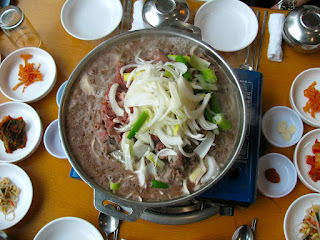Dim Sum 101
I have yet to write about dim sum on this blog, but is a quintessential part of Hong Kong cuisine. Those of us from the Midwest think of Chinese food as fried rice, cashew chicken and egg rolls; and only the latter is anything close to what you get when ordering dim sum.
A little language lesson first. In Cantonese, dim sum means "little heart," as I learned in my current elementary Cantonese class. Non-native speakers use this phrase, but locals often say they are going out for "yum cha," which literally means to drink tea, because tea is an integral part of the traditional dim sum experience.
Ordering dim sum is similar to ordering tapas or appetizers to share. It is a general category that covers many kinds of small dishes including dumplings, steamed buns and spring rolls. One of the most popular dishes is called haa gau, which is shrimp inside delicate dumpling wraps made from rice flour.
Once you have ordered your food, however, your work is not yet done. You must clean your spoon, chopsticks, bowl and teacup before using them, though of course they have actually been washed already. The waiter will provide you with a cleaning basin, and then you rinse your dishes using either the tea or hot water on the table.
Last Sunday I went to a nearby dim sum restaurant with my roommate. It is definitely better to go with at least one other person -- that way you can order a greater variety of dishes! Below are all the things that we ate, and they are all absolutely delicious, though quite heavy and filling. My favorites are the doughy steamed buns and the turnip cake, though the rice rolls are wonderful, too.
Pork soup dumplings
BBQ Pork Buns
Haa gau, shrimp dumpling
Lo baak go, turnip cake
BBQ Rice Roll






Comments
Post a Comment